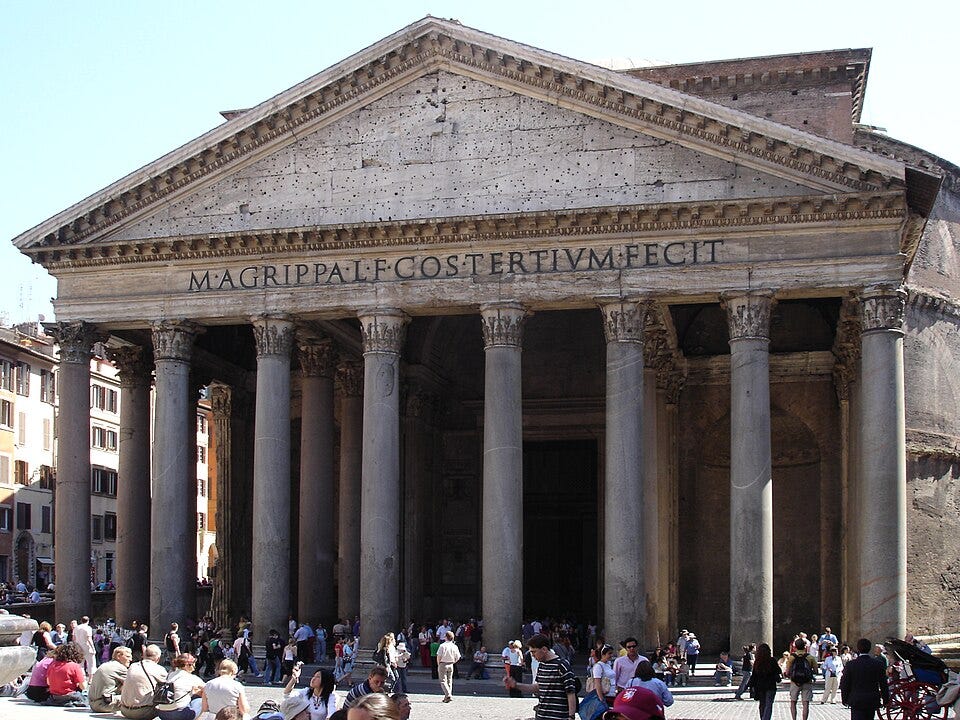Cracking the Concrete problem
Why do we love and loathe this material? And a Radio 4 discussion
An Ode to Concrete
I’ve been known to stroke concrete. Others might feel the irresistible urge to pat a little kitten or handle an object in a museum, but for me it’s concrete. It doesn’t matter if it’s a smooth, stark grey surface, or one with little stones visible, or even one left intentionally rough.
For me, what’s special about concrete is that its form is indeterminate: it can be anything. It starts as rock, then — when mixed with water and small stones — becomes a lumpy grey liquid that can be poured into a mould of any shape and left while chemistry takes over, turning the liquid back into rock. The end product could be a circular column, a rectangular beam, a trapezoidal foundation, a thin curvy roof, a giant dome. Its amazing flexibility means it can be formed into any shape; because of its huge strength, because it resists water and chemicals in the ground, and because it lasts an extremely long time, concrete is, after water, the most-used material on the planet.
There’s a but…
Making cement, an important ingredient in the production of concrete, is responsible for about 8% of the world's total CO2 emissions. If cement was a country, it would be the third or fourth largest carbon emitter. So our continued use of concrete, in the way we’ve been doing so far, is simply not sustainable.
This is one of those ‘two things can be true at the same time’ situations: concrete is an incredible material which has enabled us to build robust, long-lasting, and beautiful (or not, per your preference) buildings, tunnels, bridges and other underground structures. It is also a deeply problematic material due to its carbon intensity.
So, what can we do about it?
A whole host of ideas and solutions were discussed on Radio 4’s Rare Earth episode: Set in Concrete. I joined Smith Mordak and Colin Hills as a panellist, for what I thought was a good, nuanced discussion.
If you don’t have time to listen to the whole thing, my key takeaways were:
Reduce the use of concrete to specific instances where it is currently unavoidable. This involves thinking deeply about how many new structures we’re building (rather than reusing existing ones), how tall and heavy they need to be, and whether concrete is really needed. Can we use steel, or better, timber instead?
Reduce the amount of concrete in those unavoidable situations. One of the factors that dictates the quantity of concrete in a structure is the weight and other forces we’re putting into our calculations. It’s become clear that the forces demanded by the regulations that we follow are higher than what we see in actual use. Lower loads = less concrete.
Where we do have to use concrete, use ingredients that are recycled or that even actively capture carbon, this helps chip away at the carbon emissions.
Think about the deconstruction of the building in the early stages of design. If we think about how a structure can be reused and recycled at the end of its life right at the start, this would affect how we design and construct it. (Our smartphones and frankly everything we make would benefit from this approach.)
Some of these principles are already being implemented. As an example, in the foundation of The Shard, we replaced around 80% of the cement in the concrete mix with a waste product from steel manufacture, which saved many 100s of tonnes of carbon.
But there’s a long way to go to make truly zero-carbon concrete.
So, how do I feel about concrete?
I come back to the ‘two things can be true’ statement. It has been a foundational (ha ha) material — strong, long-lasting and versatile that has been used for over 2,000 years (I’m looking at you, Pantheon). But I’m calling time on concrete.
At least in the way we’ve been doing it so far.
Sharing this publication with your friends is free, and means a lot me.
Listen to Set in Concrete on Radio 4 here, or on BBC Sounds.
https://www.bbc.co.uk/programmes/m0029rqw
Image credit: from Wikipedia Commons


I love the feel of concrete. Thanks for describing the good, the bad, and the future of this sturdy material!
You may find this interesting, a new mould design for concrete floors that uses 60% less concrete: https://ethz.ch/en/news-and-events/eth-news/news/2025/01/zigzags-for-greener-construction.html